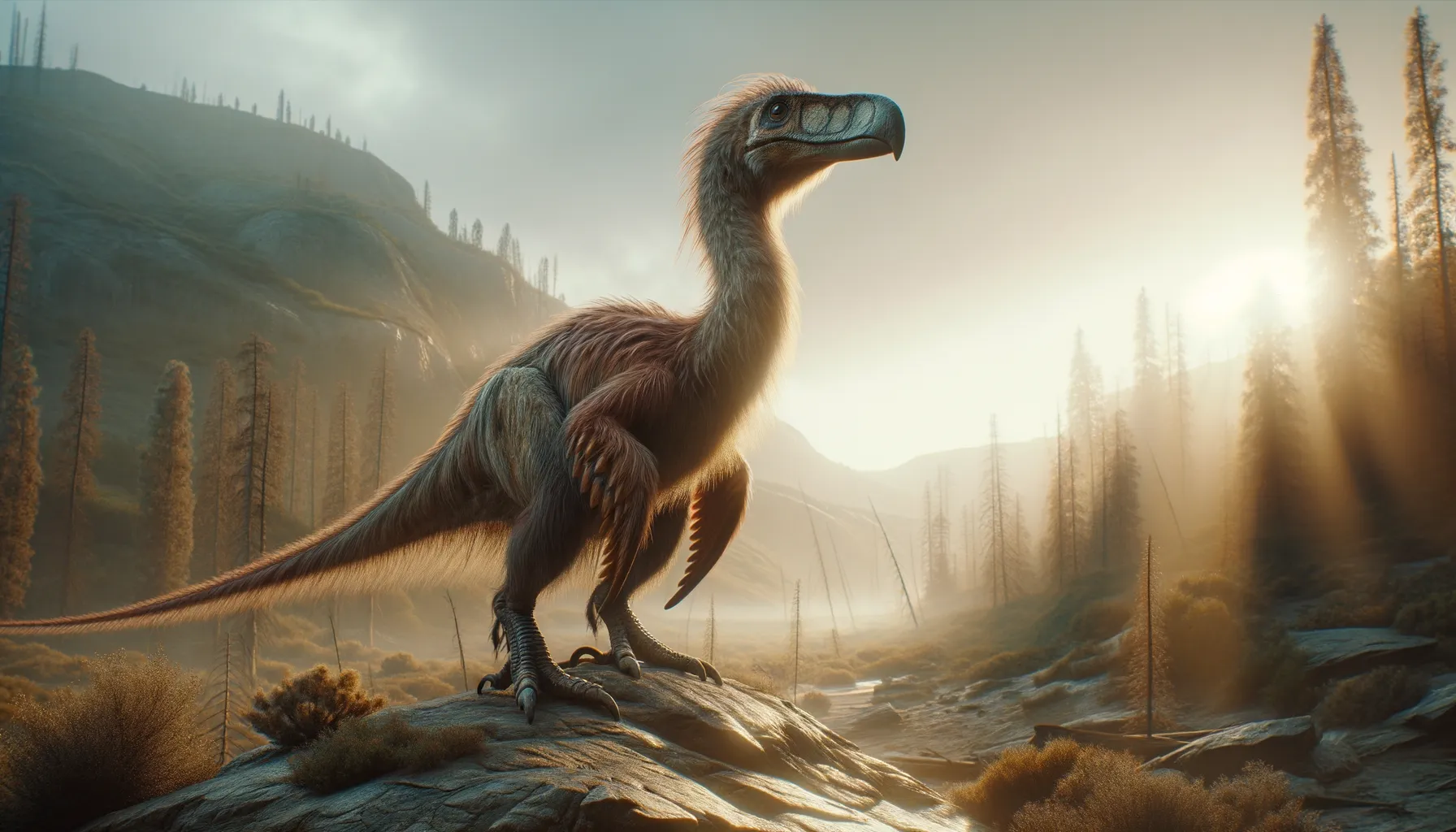
Caenagnathus
Meet the swift beaked wonder of prehistory!
Period
Cretaceous
Length
Measured about 3 meters in length.
Height
Stood around 2 meters tall.
Weight
Approximately 100 to 200 kilograms.
Caenagnathus was a bird-like dinosaur from the Late Cretaceous known for its lightweight build and potentially omnivorous diet. It's part of the Oviraptorosauria group, showing a mix of reptilian and avian traits like a beak and long legs. Its fossil remains have mostly been found in North America, offering insights into the diversity of dinosaur species before the mass extinction event.
Diet
Caenagnathus likely had an omnivorous diet, enjoying both plants and small animals. Its beak might have helped it break through tough plant material or to catch small creatures.
Hunting
While it might not have been a top predator, Caenagnathus could have chased after small prey using its speed. Additionally, it likely foraged for food, using its beak to pick at various options available in its environment.
Environmental challenges
Living during the Late Cretaceous, Caenagnathus faced challenges such as climate changes and competition for food. It also had to be vigilant about avoiding larger predators that roamed its habitat. Periodic environmental changes could affect its food supply, requiring adaptability to new conditions.
Speed
Likely a fast runner, similar to an ostrich.
Lifespan
Estimated to live for around 20 to 30 years.
First discovery
First discovered in 1923 in Alberta, Canada.
Fun Facts
- Caenagnathus was a bird-like dinosaur that lived during the Late Cretaceous period, approximately 75 million years ago.
- This dinosaur is believed to have been an omnivore, meaning it probably ate both plants and small animals.
- Caenagnathus was relatively small, with an estimated length of around 10 feet, which is similar to the size of a modern-day ostrich.
- It belonged to a group of dinosaurs called oviraptorosaurs, which were characterized by their beaks and often colorful crests.
- Fossil evidence suggests that Caenagnathus had feathers, making it one of the many feathered dinosaurs discovered by paleontologists.
- Despite its bird-like appearance, Caenagnathus could not fly, but likely used its feathers for display or temperature regulation.
- The name Caenagnathus means 'recent jaw' in Greek, referring to its unique jaw structure that puzzled scientists when it was first discovered.
Growth and Development
Young Caenagnathus likely grew rapidly to gain an advantage in avoiding predators. As they matured, they developed stronger legs for swift movements and a robust beak. Their growth stages give paleontologists clues about their life cycle and survival strategies.
Habitat
This dinosaur lived in areas that had diverse ecosystems with rivers and woodlands, providing ample resources. The variety in its habitat supported its opportunistic feeding behavior. Fossil evidence suggests it lived in regions with seasonal variations.
Interaction with other species
Caenagnathus may have coexisted with various herbivorous and carnivorous dinosaurs, indicating a complex food web. Its interactions included competing for food and possibly avoiding predators. It could have formed small groups or lived solitary, adapting to dynamic environments.
Natural lifespan
Caenagnathus possibly lived for two to three decades in the wild.
Reproduction
Caenagnathus likely laid eggs in nests, similar to modern birds. These nests might have been protected by adult dinosaurs to ensure offspring survival. Fossilized eggs give insights into its reproductive strategies.
Social behaviour
While not much is known, it may have exhibited social behaviors seen in modern birds, like forming temporary feeding groups. These interactions might have offered protection against predators. Evidence is still being uncovered about its social dynamics.
Fossil locations
Fossils of Caenagnathus have predominantly been found in Alberta, Canada. These discoveries have helped identify it as part of North America's diverse dinosaur faunal assemblage. The fossil records are crucial for understanding its role in the Late Cretaceous ecosystem.
